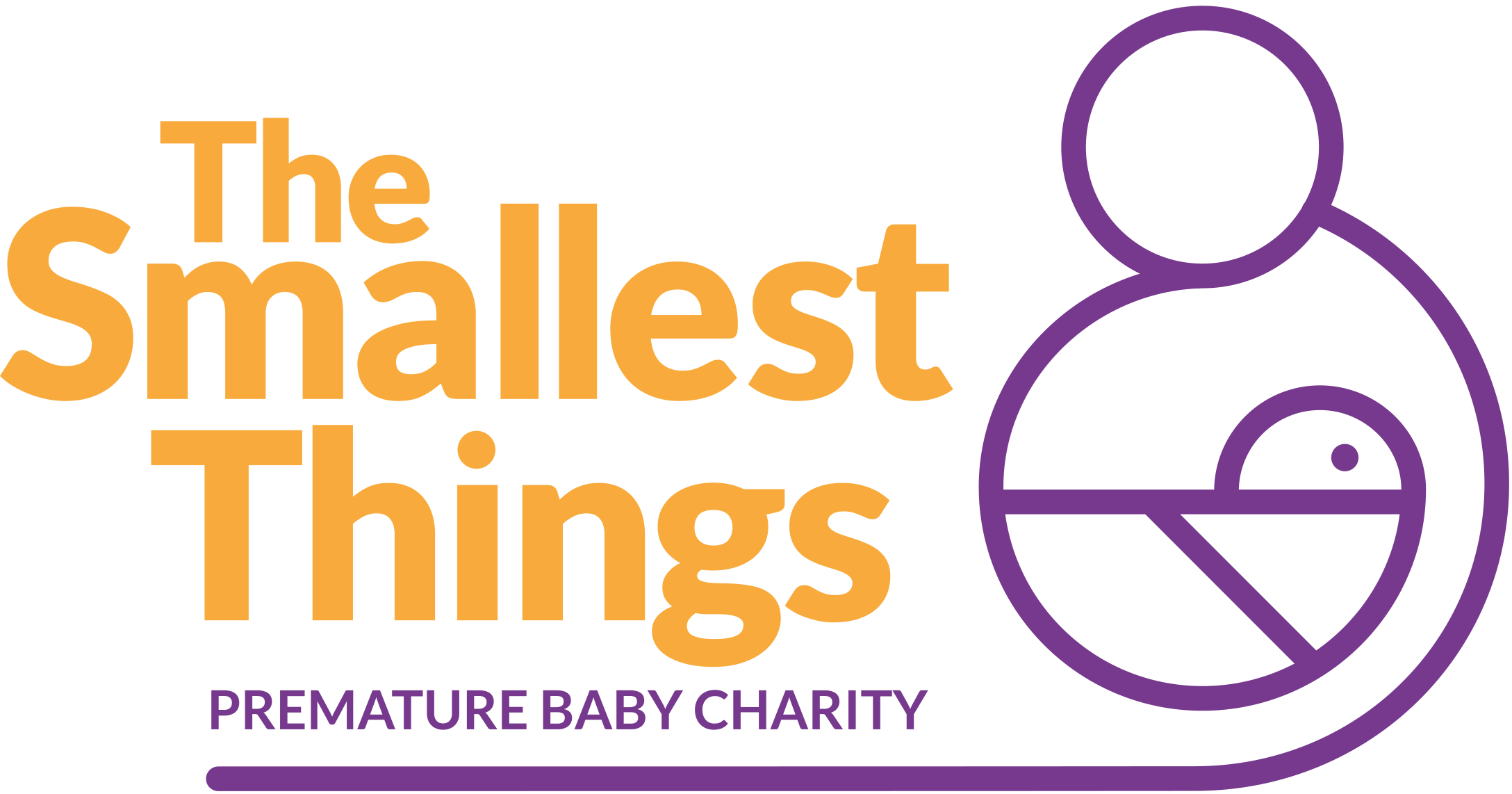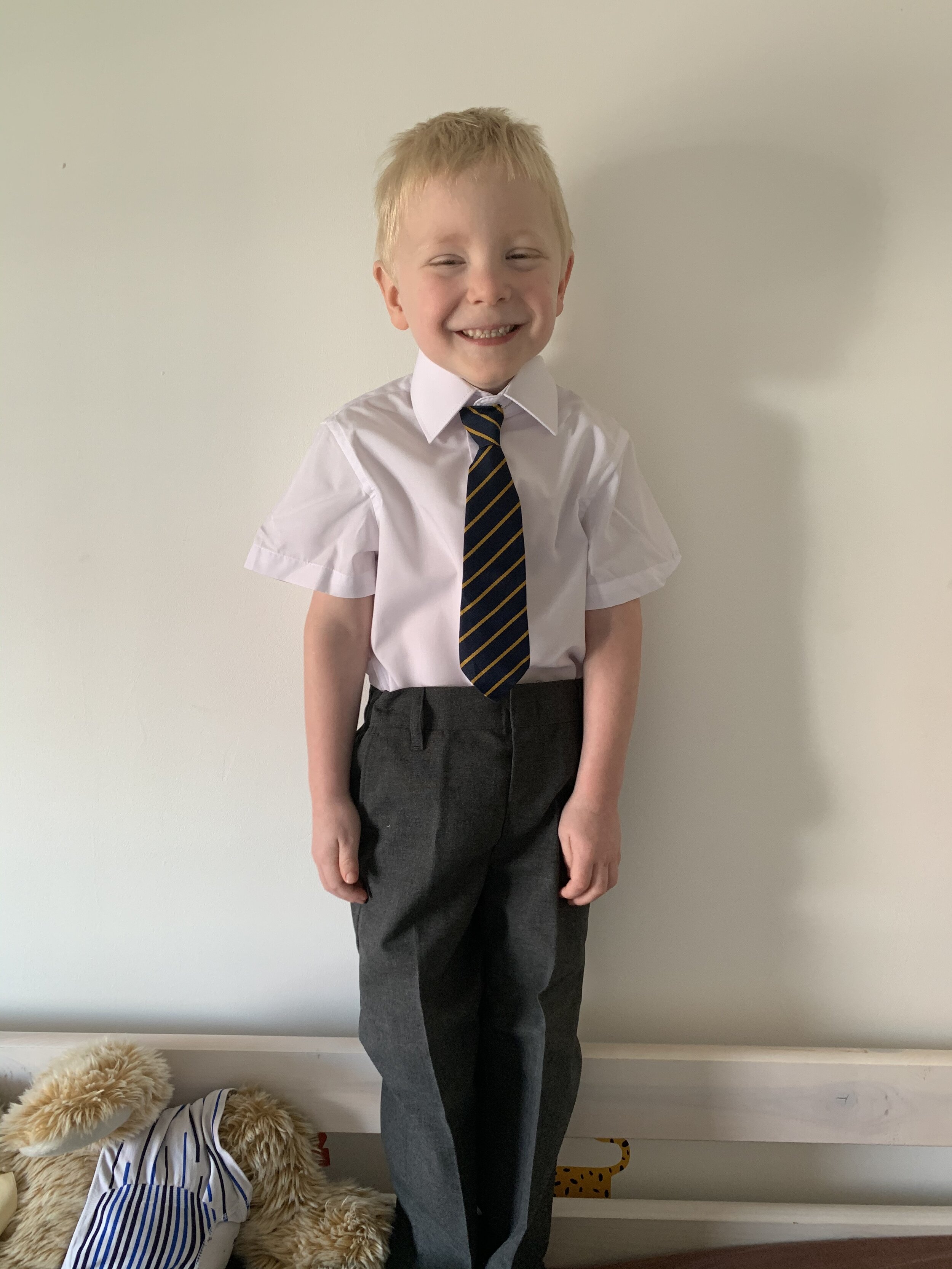Helping Hugo on his school journey
Happy Hugo looking forward to starting school aged five
Hugo was born at the end of August 2015 at 24 weeks’ gestation. He had a rocky start to life, spending seven months in hospital, being ventilated and needing heart and bowel surgery. In the early days we were worried about his survival and long-term prognosis, but once he came home we started to think about his longer-term development.
Delayed development
Hugo was noticeably behind in his development compared to other children his age, but our nursery worked with us in developing a specific learning plan for him, especially once he was diagnosed with Global Developmental Delay (GDD). We also had some input from the Special Educational Needs Assessment Service (SENAS) although they didn’t think he was behind enough to need an Education, Health and Care Plan (EHCP). However, it was clear that the message we had received in the early days that “preterm babies should catch up by the time they’re two years old” simply wasn’t going to apply to Hugo as he’d had so much to contend with in his first year.
Starting school
When we started to think about school it seemed unfair on him to expect him to start school just days after his fourth birthday as he would be up to 16 months behind some of the other children and would really struggle. So we applied to delay his school entry to the following year, under the “summer born” admission rule. It took some doing, but eventually Hugo was given a place at his big brother’s school, to start Reception in the September just after his fifth birthday.
We had been told nothing about the issues premature babies could experience as they grew up and were really quite shocked when we did our own research and found that there were higher probabilities of SEN/ASD/ADHD, lower levels of academic attainment and that in some cases children born preterm may never catch up with their peers. No one had prepared us for this possibility and we were concerned that if we didn’t know, there was a pretty big chance that schools also didn’t fully appreciate this either.
Teaching tools
When we found out about the guide to preterm birth information for educational professionals, developed as part of the PRISM study, it was a huge relief to know that people had realised the importance of these issues and had been able to produce this information in a clear, researched format, that was available free to all who needed it.
Our next response was: “we need to get this information out there!” So we emailed out the pretermbirth.info link out to our nursery, the school we hoped he’d go to (and again to his school teacher once he was due to start Reception), the SENAS team we were working with, the local education authority, and anyone else we could think of. We also posted about it on social media and to other parents of premature babies, so that they could pass the information on to their education providers.
Support for the journey ahead
Prematurity can affect babies in so many ways and as they grow they are not all going to experience the same issues. Hugo is a whizz at maths, but struggles with language, fine and gross motor skills. The great thing about the PRISM resource is that it describes some of the potential difficulties preterm-born children can experience, helping the teachers to recognise them in this context, along with identifying strategies that can be used to support them. We will continue to refer back to this information as Hugo progresses through school and work with his teachers to ensure he gets all the support he needs.
Thanks to Rachel Corry for sharing Hugo’s story



